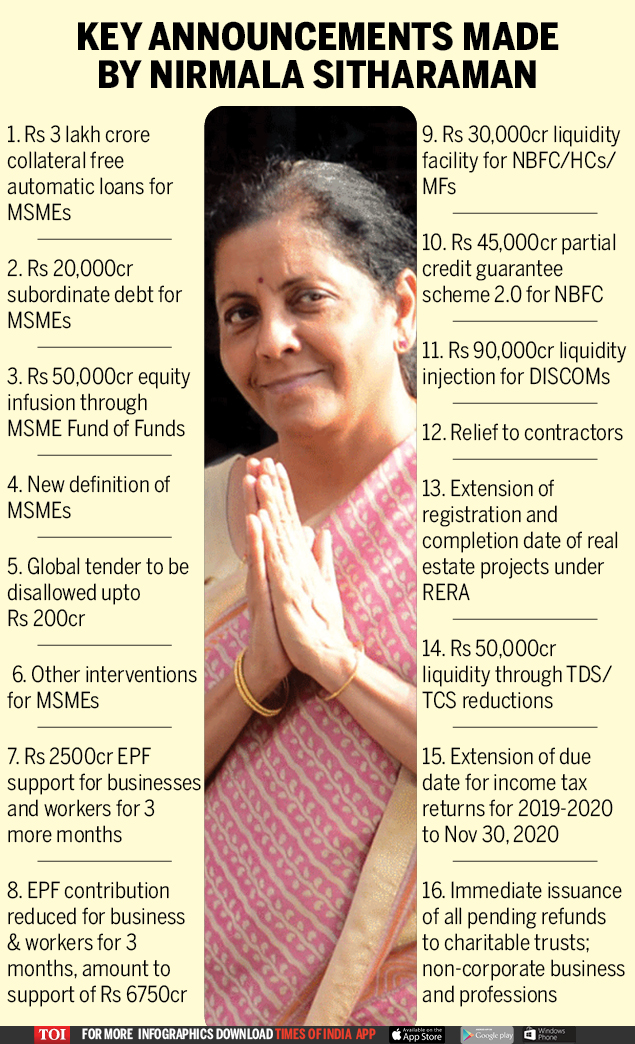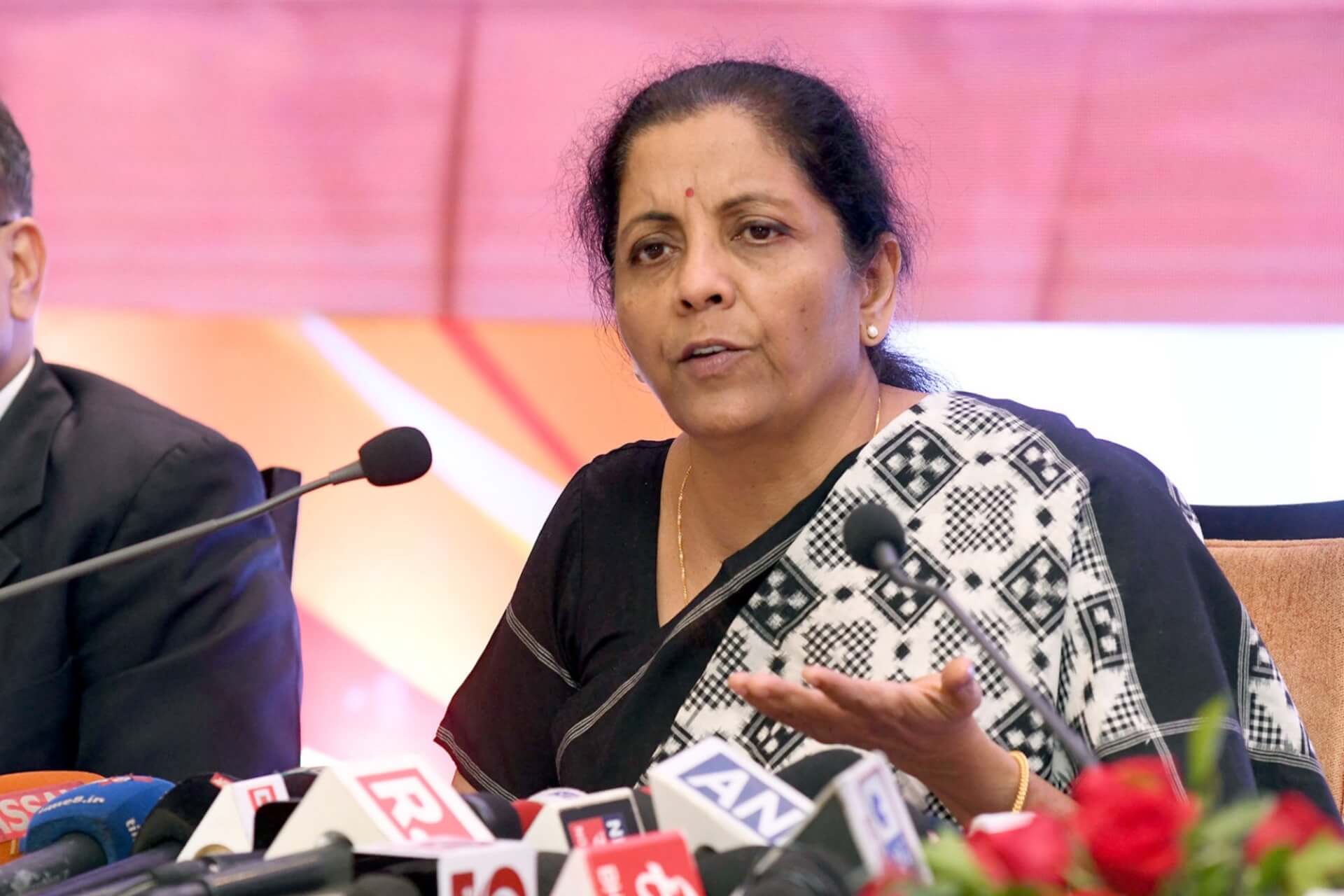On Tuesday, Indian Prime Minister Narendra Modi announced a Rs. 20 lakh crore package to relieve the economy of the pressures of the COVID-19 outbreak. The following day, Finance Minister Nirmala Sitharaman declared the first instalment of measures aimed at keeping the economy afloat. The announcement focused mainly on Micro, Small and Medium Enterprises (MSME).
To ease the burden on MSMEs, Sitharaman announced that Rs. 3 lakh crores will be reserved for collateral-free loans with a four-year tenure, with no instalment due in the first year. She also declared that Rs. 20,000 crores will be allotted for subordinated debt and announced a further infusion of Rs. 50,000 crores into the equity funds of MSMEs.
A special liquidity scheme of Rs. 30,000 crores, to buy debt issued by non-banking financial companies, housing finance companies and microfinance institutions, was also revealed along with a Rs. 45,000 crores partial credit guarantee to such institutions who, in turn, offer credit to MSMEs. Additionally, the government will bear the losses incurred on 20% such loans.
The Finance Minister also declared a reduction of 25% on the Tax Deduction at Source (TDS) and Tax Collection at Source (TCS). Further, the date of collection for Income Tax has been extended to November 30, 2020.

On Tuesday, Modi highlighted the importance of focusing on making India self-reliant, as the strategy shifts from “survival” to “revival”. Elaborating on this aspect, Nirmala Sitharaman said, “It certainly talks about a confident India which can rest on its strengths and also be able to contribute to the globe, the way in which the Prime Minister rightly pointed out the production of PPEs (personal protective equipment), and masks and also ventilators has rapidly grown within these 40 days to an extent.” She added, “We’ll build capacities, skill people and compete globally acquiring strengths […] We’ll build the local. After all, every global brand began with their local strength.”
Some have pointed out that that this as part of this self-reliance, Indian should still focus on producing products it has a comparative advantage in and import other products to ensure the lowest possible prices for Indian consumers, while also maintaining a diversity of goods to avoid engendering monopolistic tendencies. To address these concerns, Sitharaman clarified that the PM was not encouraging complete isolationism.
As Prime Minister Narendra Modi announced that this relief package is worth 10% of the Indian GDP, indicating his commitment to the crisis, several doubts were raised questioning the validity of the figure. Mocking the exorbitant number put forth by Prime Minister Narendra Modi, former Finance Minister and Senior Congress Leader, P. Chidambaram, called the announcement a “headline and a blank page”. He said that he would keep track of every additional rupee that the government infuses into the economy. He further stated, “The first thing we look for is what the poor, hungry and devastated migrant workers can expect after they have walked hundereds of kilometers.” Jairam Ramesh, another Congress Leader, also slammed the announcement, saying, “Last night the Prime Minister did what comes to him best. Maximum packaging, Minimum meaning. It was a case of classic NAMO. No Action Message Only.”
It is clear that the entire Rs. 20 lakh crores do not constitute extra expenditure but also includes loans, loan guarantees, and other forms of commitments by the government and the Reserve Bank of India (RBI). The relief package is inclusive of 1.7 lakh crore package announced by the Finance Minister of March 27. It is also inclusive of the liquidity infusion announced by the RBI recently. Hence, out of the total amount announced, merely 10.25 lakh crores is calculated as the actual additional expenditure.
Image Source: Entrepreneur

